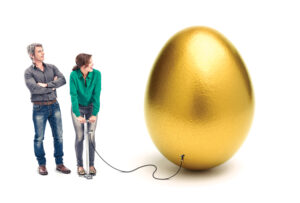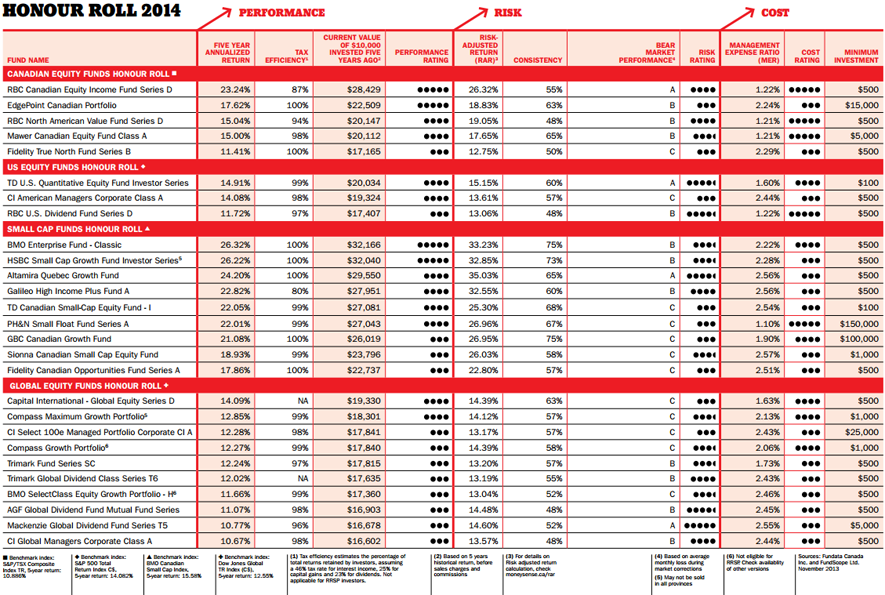Canada’s Best Mutual Funds for 2014
Prior picks have out performed their peers for over a decade.
Advertisement
Prior picks have out performed their peers for over a decade.

 Note: BMO Entreprise Fund Classic is no longer available to new investors.
Overall ratings in each category go from one circle (poor) to five circles (excellent). Any Honour Roll fund is a good buy, but some may be better than others. For instance if investing outside an RRSP, pay particular attention to “Tax Efficiency.” This measures how much of a fund’s return has been lost to taxes on distributions. (Funds that don’t distribute cash don’t lose anything, so are rated at 100%.) In general, the higher this number, the better for funds held in taxable accounts. All investors should also consider risk. “Risk-Adjusted Return” shows how much return each fund has achieved in proportion to its risk—again, the higher, the better. To play it safe, look for funds with a high “Consistency” rating (which shows the percentage of months in which a fund has performed better than its peers) and strong “Bear Market Performance” (the best funds get ‘A’s and so on down to ‘E’s).
Note: BMO Entreprise Fund Classic is no longer available to new investors.
Overall ratings in each category go from one circle (poor) to five circles (excellent). Any Honour Roll fund is a good buy, but some may be better than others. For instance if investing outside an RRSP, pay particular attention to “Tax Efficiency.” This measures how much of a fund’s return has been lost to taxes on distributions. (Funds that don’t distribute cash don’t lose anything, so are rated at 100%.) In general, the higher this number, the better for funds held in taxable accounts. All investors should also consider risk. “Risk-Adjusted Return” shows how much return each fund has achieved in proportion to its risk—again, the higher, the better. To play it safe, look for funds with a high “Consistency” rating (which shows the percentage of months in which a fund has performed better than its peers) and strong “Bear Market Performance” (the best funds get ‘A’s and so on down to ‘E’s).
Share this article Share on Facebook Share on Twitter Share on Linkedin Share on Reddit Share on Email